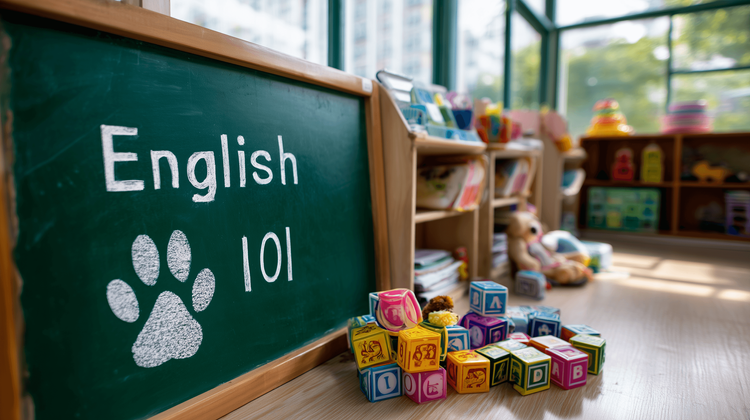English Grammar Conjunctions for Class 2- Concepts with Example

Conjunctions are the little words that join ideas and bring sentences to life, like and, but, and because. In this blog, we’ll explore what conjunctions are, how to use them, and why they’re so important for young learners of Class 2.
Let's also understand how PlanetSpark’s English Grammar Course offers interactive lessons, grammar games, and writing practice designed to help children in Class 2 use conjunctions with confidence.
What are Conjunctions?
Conjunctions are joining words used to connect words, phrases, clauses, and sentences. They help in coordinating words in a sentence. Conjunctions can be used as single words, like "and", "but", "although", or in pairs, like "neither/nor", "either/or". These are called conjunction pairs.
Types of Conjunctions for Class 2
There are three types of conjunctions:
Coordinating conjunction
Subordinating conjunctions
Paired/compound/correlative conjunctions
From Grammar Rules to Real Sentences!
Our English Grammar program teaches conjunctions through fun games, sentence-building, and writing tasks. No more rote learning only confident usage!
Enroll now for free trials to boost your child’s grammar fluency
Coordinating conjunctions
Coordinating conjunctions are never used at the beginning of a sentence. They are single words that join similar words, elements, or phrases that serve the same grammatical purpose in a sentence.
The pneumonic 'FANBOYS' can be used to remember the seven coordinating conjunctions easily:
"For" is used to specify a reason or purpose. In moderns English, "for" is a rarely used conjunction. Example: I bought a pair of new sneakers for my birthday.
"And" connects two things. Example: She visits her parents every week on both Tuesday and Friday.
"Nor" emphasises one negative idea to another existing one. Example: Neither Tina nor Richa qualified for the second round.
"But" denotes a contrast between two items or ideas. Example: I wanted to go to a movie, but now I want to stay in and relax.
"Or" presents an alternative to a preexisting positive idea. Example: Do you like butter or jam?
"Yet" helps introduce an idea that adds value to a previous idea, but both are usually contrasting. Example: She had toothache yesterday yet refused to visit the dentist.
"So" highlights the effect or result of an occurrence. Example: I studied hard this time so that I could pass with good grades.
Did You Know?
"However" and "therefore" are transitional words but can also function as connecting words or conjunctions. They are used to show cause and effect in the sentence.
I let her decorate the room for the function. However, I was not too fond of the outcome.
Several tenants complained about the leakage in pipes. Therefore, the owner had to replace the pipes.
Subordinating conjunctions
Subordinating conjunctions connect similar words, phrases, or a subordinate clause to the main clause to establish a relationship between the two. Unlike coordinating conjunctions, subordinating conjunctions can be used at the beginning of the sentence.
Some common subordinating conjunctions are -
after
although
as much as/as long as/as much as
as though
because
before
how
if
in order to
once
since
than
though
unless
until
till
when/whenever
where/wherever
whether
while
There are two ways to structure a sentence using subordinating conjunction:
Main clause + subordinate clause
The teacher punished the students after giving several warnings.
She should leave by 6 am if she wants to reach on time.
- The subordinate clause, main clause: Add a comma between the sentences when the subordinate clause is used at the beginning of the sentence.
- After giving several warnings, the teacher punished the students.
- If she wants to reach on time, she should leave by 6 am.
Struggling with “and” or “but”? Let’s Fix That.
PlanetSpark’s concept-to-application model helps Class 2 students understand conjunctions deeply through real sentences, live practice, and instant correction.Start your child’s grammar journey today with free trials!
Paired/Compound/Correlative Conjunctions
These conjunctions consist of two words or phrases to establish alternatives and are used in pairs but at different parts in the same sentence to make sense. Paired conjunctions are basically adverbs that are used as conjunctions.
Note: Correlative conjunctions help in structuring the sentence but make it lengthy and wordier than necessary. Hence, avoid using them often.
Either-or, both-and, neither-nor, not only-but also, not-but, etc., are paired conjunctions.
both-and: The team invested both time and energy to complete the project.
not only-but also: Not only was Raju late to school, but he also didn't complete his homework.
either-or: I will either have pizza or pasta for lunch today.
neither-nor: Neither the teachers nor the students were informed about the holiday.
Learn with practice by using the rules on Class 2 Grammar Worksheet on Joining Words worksheets
Importance of Learning Conjunctions for Kids
Clarity: Conjunctions resources for grade 2 help them communicate effectively and clearly.
Credibility: Good grammar is often a sign of credibility, showing that the speaker has the subject knowledge and people listen to that person. This leaves a good and lasting impression on others.
Ambiguity: Conjunctions help avoid ambiguity in the message and leave no room for confusion or misinterpretation.
Value the audience: When you write incorrect English or use commas and punctuations in the wrong places while writing an email, you leave an impression that you do not respect or care enough about the reader and his time.
Keep the people interested in your conversation: People often lose interest in the discussion if incorrect grammar is repeatedly used
Let's understand and learn conjunctions in grammar, their types and their importance in English grammar.
Key Takeaways
Grammar forms the basis of effective communication; learning the basics of grammar is essential.
People often lose interest in a conversation with the frequent use of incorrect grammar.
Conjunctions are connecting words used to connect words, phrases, clauses, and sentences. They are used as single words or in pairs to coordinate sentences.
The three types of conjunctions are coordinating conjunction, subordinating conjunctions and paired/compound/correlative conjunctions.
Coordinating conjunctions are single words that join similar words and elements and not at the beginning of a sentence.
Subordinating conjunctions can be used at the beginning of the sentence and establish a relationship between the subordinate clause and the main clause.
Correlative conjunctions exist in pairs but must not be used very often as they make the sentence more lengthy than necessary.
Want to clear the conjunctions concept in minutes? Learn Everything about Conjunctions in 2 minutes!
Master Conjunctions with Confidence – The PlanetSpark Way
Struggling with conjunctions like and, but, because, or although? PlanetSpark’s English Grammar Course for Class 4 turns confusion into clarity with:
Live, expert-led grammar classes
Fun sentence-building and conjunction games
Real-time feedback and writing practice
Interactive worksheets and quizzes
Concept clarity through examples, stories, and visuals
Whether it's joining two ideas or improving sentence flow, your child will learn to use conjunctions accurately and confidently.

Conclusion
Conjunctions have an essential function as they join other words and ideas together. Sentences would be too simple without conjunctions, and any conversation would be too short and non-compelling. It is important to learn conjunctions in grammar and use them in a limited capacity to make sense of a sentence.
Frequently Asked Questions
Q. What is the easiest way to remember all coordinating conjunctions?
A. The pneumonic 'FANBOYS' can be used to remember the seven coordinating conjunctions easily:
For - Used to specify a reason or purpose
And - Connects two things
Nor - Emphasises one negative idea to another
But - Denotes contrast between two items or ideas
Or - Presents an alternative to a preexisting positive idea
Yet - Helps introduce an idea that adds value to a previous idea, but both are usually contrasting
So - Highlights the effect or result of an occurrence
Q. Out of all the three types of conjunctions, the use of which should be avoided? Why?
A. Paired or correlative conjunctions exist in pairs and should not be excessively used because they make the sentence lengthier than necessary.
Q. Which conjunctions show cause and effect in the sentence?
A. "However" and "therefore" are two conjunctions that can show cause-effect in a sentence.
Q. What would happen without conjunctions?
A. Conjunctions are essential because they help deliver compelling messages and make the communication interesting. They not only connect several words but also join broader ideas and concepts to build complex sentences.
Personalized Communication Report
Record a video to get a AI generated personalized communication report for your child

Hi There, want to try these
tips for your child with
LIVE with our expert coach?
Let's check your child's
English fluency
